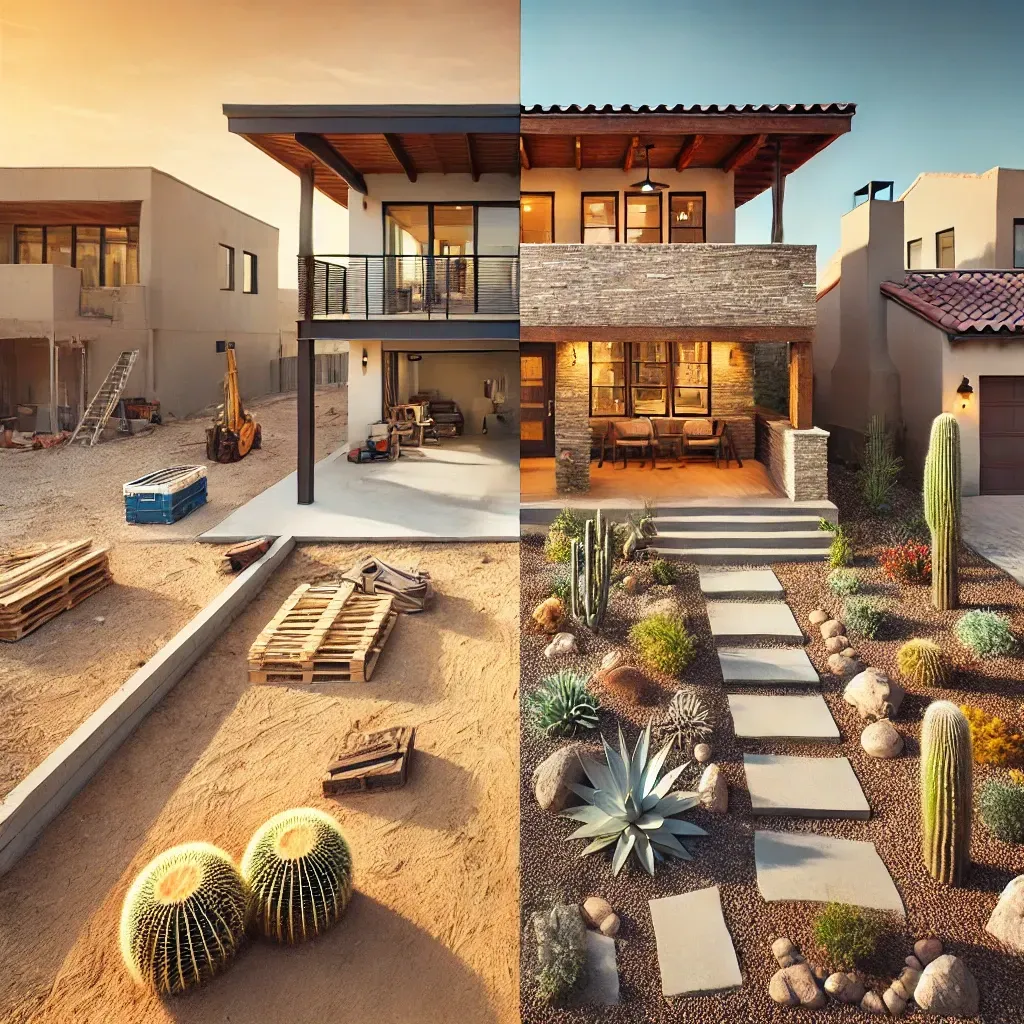
Fully Updated Resale Home vs. New Build: Why Move-In Ready Wins in Tucson, AZ
Introduction
Buying a home is one of the most significant decisions you’ll make, and choosing between a new build and a resale home can feel overwhelming. Each option has unique advantages and drawbacks, depending on your lifestyle, budget, and preferences. Let’s break down the pros and cons to help you make an informed choice that aligns with your needs.
New Build Homes
Pros:
Everything is New: No immediate repairs or replacements.
Modern Design: Latest layouts, energy-efficient features, and contemporary styles.
Customization Options: Choose finishes, appliances, and upgrades (if under construction).
Builder Warranties: Coverage for structural and major systems for added peace of mind.
Energy Efficiency: Lower utility costs due to advanced insulation and technology.
Cons:
Hidden Costs: Often lacks backyard landscaping, window coverings, ceiling fans, and appliances like a refrigerator, washer, or dryer.
Neighborhood Construction: Ongoing noise and activity if the development is still under construction.
Premium Pricing: Builders may offer fewer price negotiations compared to resale homes.
Immature Landscaping: Takes time for trees and plants to grow, affecting privacy.
Additional Expenses: Backyard, fencing, and custom upgrades can add $20,000–$50,000+.
Estimated Costs of Items Not Supplied by Builders
Backyard Landscaping: $5,000–$30,000+
Basic sod and gravel: $5,000–$10,000
Mid-range (patio, irrigation, shrubs): $15,000–$20,000
High-end (pavers, custom features, pool): $25,000+
Window Coverings: $1,500–$7,500+
Basic blinds: $1,500–$2,500
Plantation shutters or motorized shades: $4,000–$7,500
Ceiling Fans/Light Fixtures: $500–$2,500+
Basic fixtures: $100–$300 each installed
Designer fixtures: $500+ each installed
Appliances (Washer, Dryer, Refrigerator): $3,000–$8,000+
Standard models: $3,000–$4,500
High-efficiency or luxury brands: $5,000–$8,000
Fencing: $2,000–$15,000+
Chain link or wood: $2,000–$5,000
Privacy or wrought iron: $7,000–$15,000+
Outdoor Features (Patio Cover, Pergola): $3,000–$15,000+
Simple patio covers: $3,000–$5,000
Custom pergolas: $10,000–$15,000+
Water Softener/Reverse Osmosis System: $1,500–$3,500+
Resale Homes
Pros:
Established Neighborhoods: Mature landscaping, quieter streets, and developed communities.
More Affordable Upfront: Typically includes appliances, window coverings, and backyard landscaping.
Negotiable Pricing: Greater opportunity for seller concessions and lower purchase prices.
Move-In Ready: Avoid waiting for construction or additional work after closing.
Character and Charm: Unique features often unavailable in new builds.
Cons:
Potential Maintenance: Repairs or upgrades may be needed due to age.
Outdated Features: May not include modern layouts or energy-efficient systems.
Limited Customization: What you see is what you get.
Higher Utility Costs: Older homes may have higher energy consumption.
Which is Right for You?
Each option offers unique benefits and challenges. Let me help you weigh the pros and cons to find the perfect fit for your lifestyle and budget!
What Is APR and Why Does It Matter?
Understanding APR: The True Cost of Your Loan
When financing your home, you might hear terms like “interest rate” and “APR.” While they sound similar, they’re not the same. Here’s what you need to know:
What Is APR?
APR (Annual Percentage Rate) reflects the true cost of your loan, including:
Interest rate
Loan origination fees
Closing costs
Points (if applicable)
APR is expressed as a percentage, just like the interest rate, but it’s usually higher because it includes these additional costs.
Why Is APR Important?
It shows the total cost of borrowing money over time, making it easier to compare loan offers.
An advertised low-interest rate might come with high fees, raising the APR and making the loan more expensive.
Example of APR in Action:
A builder offers a 5% interest rate, but additional fees increase the APR to 5.25%.
This means the loan is more costly than it appears at first glance.
How to Compare Loan Offers:
Ask for APR: Always review the APR, not just the interest rate.
Request a Loan Estimate: Ensure all fees and costs are clearly outlined.
Evaluate Total Costs: Consider monthly payments AND long-term expenses.
Key Takeaway:
APR helps you make smarter financial decisions by revealing the true cost of a loan. I’m here to guide you through financing options and connect you with trusted lenders who prioritize transparency and your best interests!
